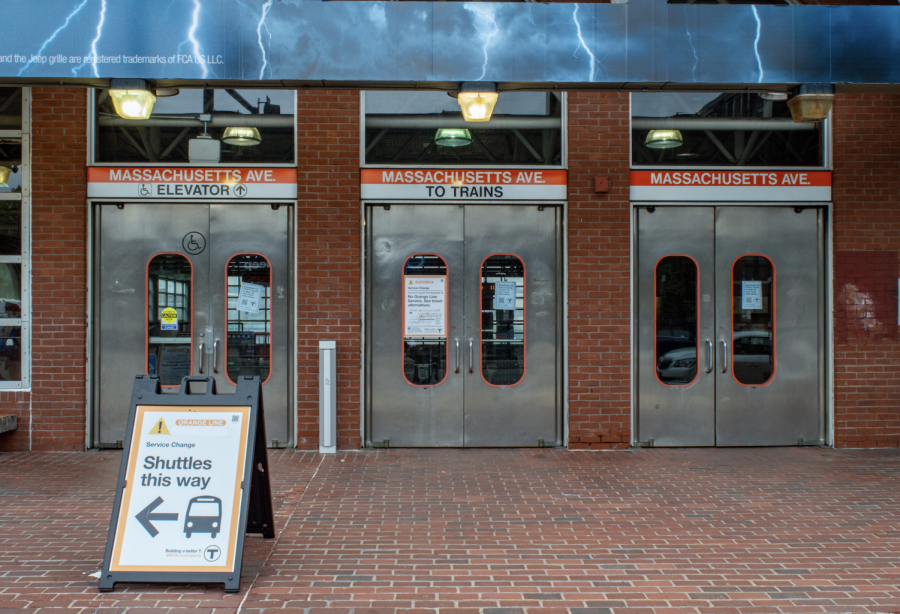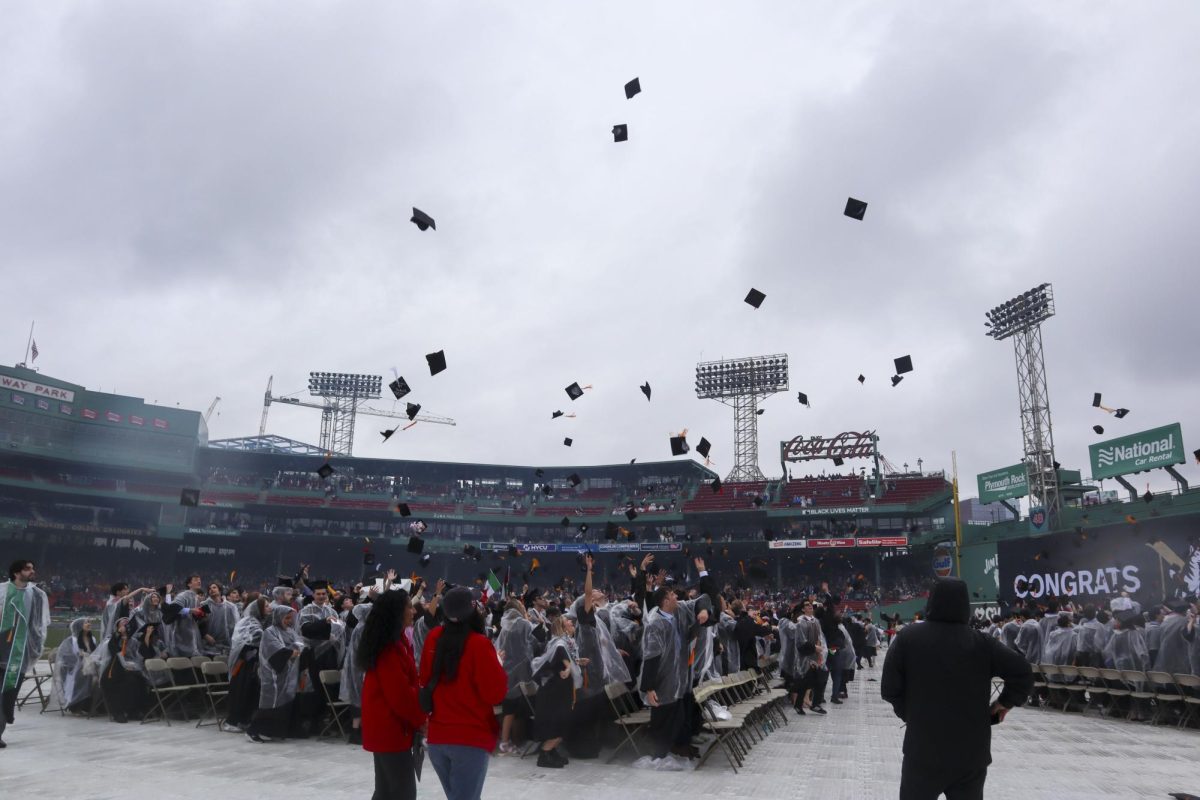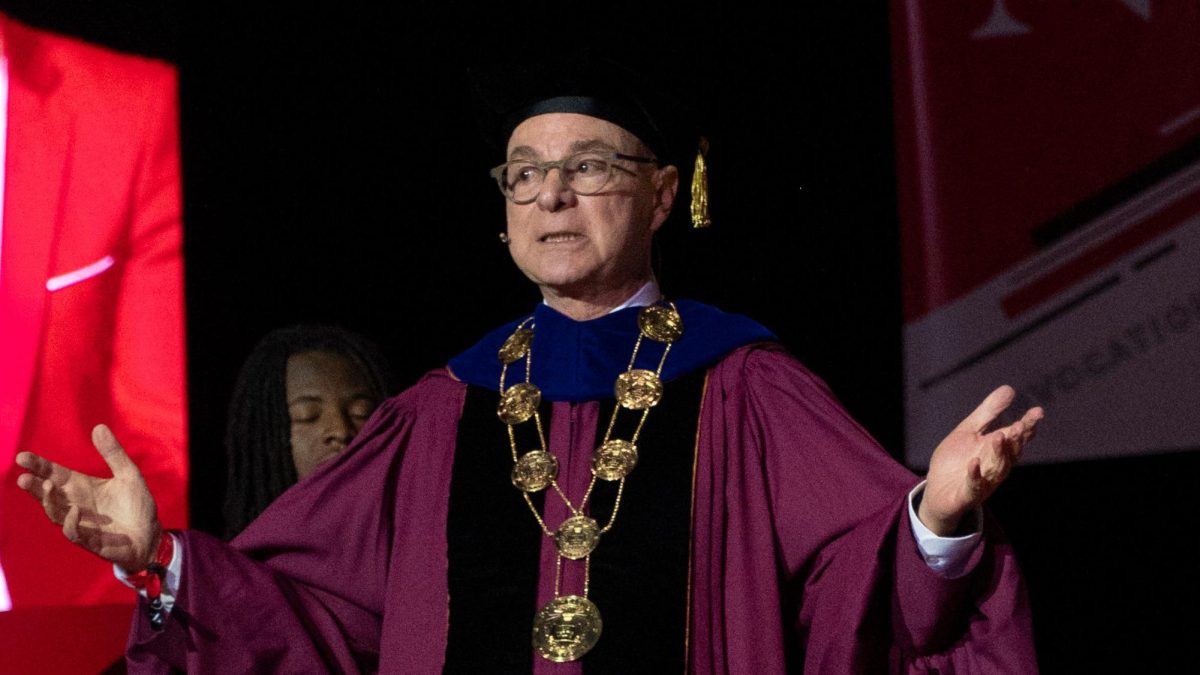Op-ed: MBTA construction has been a burden on Northeastern students
The Orange Line closing negatively affected Northeastern students’ ability to arrive on campus.
November 1, 2022
The Massachusetts Bay Transportation, or MBTA, Orange Line connecting Forest Hills and Oak Grove has been the second most traveled line since its construction in 1901. The entire line was shut down from Aug. 19 through Sept. 18 because the line had been running slower causing it to take an extra 20 minutes for a round trip on the orange line.
The aging of the historical Orange Line received attention after the incident in the summer, and the MBTA was questioned by state lawmakers on safety concerns. However, the inadequate project planning and implementation for the shutdown failed to match the MBTA’s intention and promise to citizens, and caused major inconveniences for some.
As a Northeastern student living off-campus, I found the traffic on my way to school on weekdays became significantly heavier as the Orange Line remained closed. The housing crisis at Northeastern has forced some students to move out to off-campus apartments, and the lack of alternative commuting options became a burden for college students whose time can be better spent on schoolwork and career planning.
Before and after the Orange Line construction, I experienced overcrowded Green Line trains where people were always pushed against the doors during peak times. Safety concerns and delays on the Green Line made me worry about getting hurt and being late for classes. Even after the implementation of the reconstruction, I am still experiencing constant delays in trains and slow corners on the Orange Line.
Besides the Orange Line fire incident in August, there have been major safety incidents, including a Green Line train derailing at Park Street and explosions that caused Green Line riders to flee MBTA station. Massachusetts Sen. Elizabeth Warren interrogated the Transportation Department authorities and concluded that, “Prioritizing safety and service should not be ‘either, or,’ it should be ‘both, and.’”
The shutdown of the D branch of the Green Line started Sept. 24, not long after the reopening of Orange Line. According to the details released by the MBTA, station crossings will be improved, and the Train Protection System will be installed for accident prevention.
Over its years in service, major shutdowns of the trains in Boston have rarely taken place. In May 1987, MBTA spent several days moving a section of the railway underground. The purpose of the renovation was to make the system more reliable and clear through the semi-submerged structure. Facing the upcoming traffic situation, the MBTA brought in 100 buses and the mayor of Boston held a press conference to urge patience. The solution 35 years ago does not necessarily apply to today’s Boston.
In 2022, simply urging drivers to avoid passing certain routes has become less feasible. According to a Boston Globe analysis, a bus shuttle from Forest Hills to Back Bay took double the time the bus would normally take on the first full weekday of the Orang shutdown. The MBTA failed to consider the extensive ownership of cars in a major metropolitan city. MassDOT Highway Administrator Jonathan Gulliver said that prioritization of public shuttles would decrease the capacity of roadways while bluntly admitting that significant congestion would be felt. The Boston Globe also found that the citizens of Boston suffered from late bus shuttles caused by traffic congestion, which is extremely frustrating for those who need to be in their positions in the morning.
Unfortunately, Northeastern has failed to help students with financial support for transportation. The ticket price for a ride on MBTA is $2.40, and students can only receive an 11% discount on passes compared with a 50% subsidy on monthly MBTA passes for a Harvard student. Northeastern is located near the center of Boston city with two MBTA stations on campus.
Furthermore, the rest of Boston’s subway lines deserve more attention from the MBTA to increase the economic efficiency and convenience. Customer feedback on the renovated Orange Line does not seem to match the image proposed by the MBTA. Since the line reopened on Sept. 19, slow zones with speed restrictions have frustrated customers with high expectations after one month of excruciating ways of commuting. Even though the MBTA promised that trains on the Orange Line would be able to travel faster without the restriction areas that serve to bring a “broader impact on dispatching the entire line from end to end,” the company has been so understaffed that it had to cut its service in July. The lack of enough dispatchers not only caused inconveniences on the Orange Line, but also affected people that commute by other lines.
For those who rely on public transportation, Northeastern University has both the E branch of the Green Line and the Ruggles Station of the Orange Line for students’ daily commutes. The reopening the Orange Line and the unaffected Green Line E Branch provided students with more reliable rides. Some riders have observed drastically increased population volumes brought from Orange Line riders, which they feel have caused safety problems and substandard customer service experience.
Since Northeastern is based in a city, students should always be prepared for future shutdowns and inconveniences due to the shortage of dispatchers. Alternative transportation methods like riding a bike and walking should be considered for those who want to explore the city of Boston, with limited train resources, in the next few months.
However, Northeastern students are still facing commuting inconveniences after the Orange Line construction. As a result, our university should take note of the amount of students, including myself, who rely on public transportation, and when these inconsistencies occur, Northeastern must step in to help its students.
Tim Zhao is a second-year political science and international affairs combined major. He can be reached at zhao.shengh@northeastern.edu.








